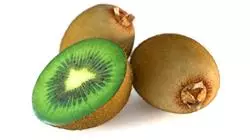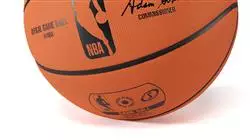University certificate
The world's largest faculty of design”
Description
Realize a great amount of detail without losing the performance of the image, thanks to the contents of this university program"

It's no secret that Texturing has changed the way an image is appreciated. Thanks to this, it is possible to have hyper-realistic effects in film animations, video games, advertising Spost and more. That is why, in this Postgraduate diploma, the student will be able to acquire the knowledge needed to develop professionally as an expert designer in Texturing. To do so, they will have to make use of the most important programs in the sector, such as 3DS Max, Photoshop and ZBrush.
So, first of all, you will learn the concepts prior to the creation of a model, such as baking, which is the projection of a high-resolution model on a low-resolution one, in order to appreciate the greatest amount of detail without losing the performance of the image. With this in mind, we will be able to move on to the Texturing module with Substance Painter, a software that offers a wide range of options when working with hyper-realistic textures. In this sense, students will learn how to configure the different values and their effects on each layer of a material, and how to work with masks to recreate dirt or wear effects.
Finally, once the model is finished it is time to move on to rendering, thanks to which the work can be shown with different sets of lights and the highest possible image quality. In this module we will go deeper into this process using Mormoset, a pioneer program in the world of digital sculpture.
For all these reasons, this Postgraduate diploma is the most complete in the academic market, being taught online and making it easier for students to study. Similarly, they will have an excellent teaching staff, who will provide various teaching materials to consolidate the theoretical content.
Know in depth the materials and rendering tool of the Marmoset Toolbag program, widely used by 3D modelers and sculptors”
This Postgraduate diploma in Texturing contains the most complete and up-to-date program on the market. The most important features include:
- The development of case studies presented by experts in 3D Modeling with 3D Studio Max
- The graphic, schematic, and practical contents with which they are created, provide practical information on the disciplines that are essential for professional practice
- Practical exercises where the self-assessment process can be carried out to improve learning
- Its special emphasis on innovative methodologies
- Theoretical lessons, questions to the expert, debate forums on controversial topics, and individual reflection assignments
- Content that is accessible from any fixed or portable device with an Internet connection
At the end of the program you will be able to create the most hyper-realistic textures that the public can see, thanks to your skills in ZBrush"
The program includes, in its teaching staff, professionals from the sector who bring to this program the experience of their work, in addition to recognized specialists from prestigious reference societies and universities.
Its multimedia content, developed with the latest educational technology, will allow professionals to learn in a contextual and situated learning environment, i.e., a simulated environment that will provide immersive education programmed to prepare in real situations.
The design of this program focuses on Problem-Based Learning, by means of which professionals must try to solve the different professional practice situations that are presented to them throughout the course. For this purpose, the student will be assisted by an innovative interactive video system created by renowned and experienced experts.
Thanks to the 100% online content of this program, you will be able to continue with your professional activities and study at your own pace"

Enroll today in this Postgraduate diploma and develop your ability to create any type of 3D textures"
Syllabus
This Postgraduate diploma has been developed following the most avant-garde educational methodology in the academic market, Relearning. With it, it is intended to provide a large amount of audiovisual material to guide students, teaching them all the intricacies of creating hyperrealistic textures with the most used software in the industry.

Work models from high to low resolution, and vice versa, to further optimize the final result, while retaining the same levels of detail and hyperrealism"
Module 1. Texturing
1.1. Texturing
1.1.1. Baking
1.1.2. PBR. Physically Based Rendering
1.1.3. Basic and Composite Texturing
1.1.4. Tileable textures
1.2. Mapping coordinates. University of Valencia
1.2.1. Unwrap and seams
1.2.2. UVW Editor
1.2.3. Editor options
1.3. Object ID
1.3.1. ID assignment and functionality
1.3.2. Multisubject material
1.3.3. Application of materials as instances
1.4. HighPoly and Normal Baking in 3DS Max
1.4.1. HighPoly and LowPoly
1.4.2. Projection Settings for Normal Map Baking
1.4.3. Projection Settings for Normal Map Baking
1.4.4. Normal Map Settings
1.5. Bake Other Materials in 3DS Max
1.5.1. Application and Bakeo Fuzzy Map
1.5.2. Composite material
1.5.3. Mask adjustment
1.6. Retopology in 3DS Max
1.6.1. Retopology Tools
1.6.2. Retopology with Graphite Tool
1.6.3. Rhetopology settings
1.7. Texturing with 3DS Max
1.7.1. Material properties
1.7.2. Texture Baking
1.7.3. Textural Toasting. Complete Map, Normal Map and AO Map
1.8. Texturing with Photoshop
1.8.1. Coordinate Template
1.8.2. Adding details in Photoshop and reimporting template with textures
1.8.3. Shading a Texture
1.8.4. Create Normal Map
1.9. Mapping coordinates with Zbrush
1.9.1. UV Master
1.9.2. Control Painting
1.9.3. Unwrap yandFlatten
1.10. Texturing with Zbrush
1.10.1. Painting mode
1.10.2. Noise Maker
1.10.3. Projection of images
Module 2. Substance Painter Texturing
2.1. Substance Painter
2.1.1. Create New Project and Reimport Models
2.1.2. Basic Controls and Interface 2D and 3D Views
2.1.3. Baking
2.2. Baking Layers
2.2.1. World Space Normal
2.2.2. Ambient Occlusion
2.2.3. Curvature
2.2.4. Position
2.2.5. ID, Normal, Grosor
2.3. Layers
2.3.1. Base Color
2.3.2. Roughness
2.3.3. Metallic
2.3.4. Material
2.4. Masks and Generators
2.4.1. Layers and UVs
2.4.2. Masks
2.4.3. Procedural Generators
2.5. Base Material
2.5.1. Types of Material
2.5.2. Customized Generators
2.5.3. Creation of a Base Material from Scratch
2.6. Brushes
2.6.1. Predefined Parameters and Brushes
2.6.2. Alphas, Lazy Mouse and Symmetry
2.6.3. Create Custom Brushes and Save Them
2.7. Particles
2.7.1. Particle Brushes
2.7.2. Properties of Particles
2.7.3. Particles Using Masks
2.8. Projections
2.8.1. Preparing Textures
2.8.2. Stencil
2.8.3. Cloning
2.9. Substance Share/Source
2.9.1. Substance Share
2.9.2. Substance Source
2.9.3. Textures.com
2.10. Terminology.
2.10.1. Normal Map
2.10.2. Padding or Bleed
2.10.3. Mipmapping
Module 3. Rendering
3.1. Marmoset Toolbag
3.1.1. Geometry Preparation and FBX Formatting
3.1.2. Basic Concepts. Importance of Geometry
3.1.3. Links and Materials
3.2. Marmoset Toolbag Sky
3.2.1. Environmental Setting
3.2.2. Lighting Points
3.2.3. Lights outside Sky
3.3. Marmoset Toolbag Details
3.3.1. Shadows and Pose
3.3.2. Procedural Materials
3.3.3. Channels and Reflection
3.4. Real-Time Rendering with Marmoset Toolbag
3.4.1. Image Export with Transparency
3.4.2. Interactive Export. Marmoset Viewer
3.4.3. Film Export
3.5. Marmoset Toolbag Animated Cameras
3.5.1. Model Preparation
3.5.2. Cameras
3.5.3. Main Camera Interactive Animation
3.6. Marmoset Toolbag Advanced Animated Cameras
3.6.1. Adding New Cameras
3.6.2. Parametric Animation
3.6.3. Final Details
3.7. Marmoset Toolbag 4 Raytrace
3.7.1. Subsurface
3.7.2. Ray Tracing
3.7.3. Adding Cameras and Map Rendering
3.8. Substance Painter Rendering IRay
3.8.1. IRay Settings
3.8.2. Viewer Settings
3.8.3. Display Settings
3.9. Rendering with ZBRush
3.9.1. Material Settings
3.9.2. BPR Render and Lights
3.9.3. BPR Masks and Final Rendering in Photoshop
3.10. Keyshot Rendering
3.10.1. From Zbrush to Keyshot
3.10.2. Materials and Lighting
3.10.3. Photoshop Compositing and Final Image

This academic itinerary is exclusive to TECH and you will be able to develop it at your own pace thanks to its 100% online Relearning methodology"
Postgraduate Diploma in Texturing
It is widely known that texturing has transformed the way an image is appreciated. Thanks to it, hyper-realistic effects can be created in film animations, video games, advertising spots and other media. In this sense, companies in these industries need the best designers specialized in the application of top-notch textures in their artistic creations. For this reason, TECH has created the Postgraduate Diploma in Texturing, an excellent degree that will allow you to acquire the knowledge required to be an expert in texturing and develop professionally in this field. Thanks to this program, you will be able to use the most important programs in the sector, such as 3DS Max, Photoshop and ZBrush, in order to learn how to create high quality textures and know how to apply them to your designs.
Learn in a 100% online way and without being tied to pre-established schedules
During the duration of this degree, you will master the best baking techniques, you will handle the leading methods for texturing in Substance Painter or you will manage the rendering strategies that allow you to generate first class finishes. This Postgraduate Diploma in Texturing is the most complete program in the academic market, which is taught completely online, making it easy for students to study. In addition, you will have an excellent teaching staff, which will provide you with various teaching materials to consolidate the theoretical contents. In such a way, you will have access to a wide variety of resources and you will be able to learn at your own pace, which will enable you to consolidate your knowledge and apply it in your professional career in the world of modeling and texturing.
"







